A Mixture of Valine and Isoleucine Restores the Growth of Protein-Restricted Pigs Likely through Improved Gut Development, Hepatic IGF-1 Pathway, and Plasma Metabolomic Profile
- PMID: 35328720
- PMCID: PMC8955368
- DOI: 10.3390/ijms23063300
A Mixture of Valine and Isoleucine Restores the Growth of Protein-Restricted Pigs Likely through Improved Gut Development, Hepatic IGF-1 Pathway, and Plasma Metabolomic Profile
Abstract
Valine (Val) alone or in combination with isoleucine (Ile) improves the growth under severe protein restriction; however, the underlying mechanisms remain unknown. In this study, we assessed whether Val/Ile-induced growth in protein-restricted pigs is associated with changes in gut development, hepatic insulin-like growth factor 1 (IGF-1) production, and blood metabolomics. Forty piglets were assigned to five dietary groups: positive control (PC) with standard protein content; low protein (LP) with very low protein content; and LP supplemented with Val (LPV), Ile (LPI), and Val and Ile (LPVI). LPVI reversed the negative effects of VLP diets on growth and gut morphology. Both LPV and LPVI restored the reduced transcript of IGF-1 while decreasing the transcript of insulin-like growth factor binding protein 1 (IGFBP1) in the liver. LPV and LPVI recovered the reduced plasma Val, glycine, and leucine concentrations, which were positively correlated with improved gut morphology and the hepatic IGF-1 gene expression and negatively correlated with hepatic IGFBP1 mRNA abundance. In conclusion, supplementation with a combination of Val and Ile into the VLP diets restored the decreased growth performance of pigs fed with these diets likely through improved gut development, hepatic IGF-1 expression and bioavailability, and plasma metabolomics profile.
Keywords: growth; gut development; insulin-like growth factor 1; isoleucine; low protein; metabolomics; pig; valine.
Conflict of interest statement
The authors declare no conflict of interest. The funders had no role in the design of the study; in the collection, analyses, or interpretation of data; in the writing of the manuscript, or in the decision to publish the results.
Figures
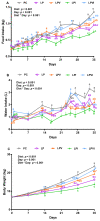
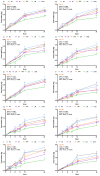


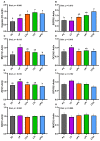
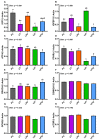
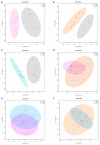

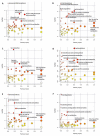

Similar articles
-
Effect of Isoleucine and Added Valine on Performance, Nutrients Digestibility and Gut Microbiota Composition of Pigs Fed with Very Low Protein Diets.Int J Mol Sci. 2022 Nov 28;23(23):14886. doi: 10.3390/ijms232314886. Int J Mol Sci. 2022. PMID: 36499225 Free PMC article.
-
Valine and isoleucine requirement of 20- to 45-kilogram pigs.J Anim Sci. 2012 Jul;90(7):2276-84. doi: 10.2527/jas.2011-4454. Epub 2012 Jan 27. J Anim Sci. 2012. PMID: 22287678 Clinical Trial.
-
Valine, isoleucine, arginine and glycine supplementation of low-protein diets for broiler chickens during the starter and grower phases.Br Poult Sci. 2014;55(6):766-73. doi: 10.1080/00071668.2014.970125. Br Poult Sci. 2014. PMID: 25269797
-
Effects of leucine supplementation on muscle protein synthesis and degradation pathways in broilers at constant dietary concentrations of isoleucine and valine.Arch Anim Nutr. 2019 Apr;73(2):75-87. doi: 10.1080/1745039X.2019.1583519. Arch Anim Nutr. 2019. PMID: 30821190
-
Isoleucine and valine supplementation of a low-protein corn-wheat-soybean meal-based diet for piglets: growth performance and nitrogen balance.J Anim Sci. 2008 Nov;86(11):2936-41. doi: 10.2527/jas.2007-0222. Epub 2008 Jun 20. J Anim Sci. 2008. PMID: 18567735
Cited by
-
Dietary Isoleucine and Valine: Effects on Lipid Metabolism and Ureagenesis in Pigs Fed with Protein Restricted Diets.Metabolites. 2023 Jan 5;13(1):89. doi: 10.3390/metabo13010089. Metabolites. 2023. PMID: 36677013 Free PMC article.
-
Blood metabolic and physiological profiles of Bama miniature pigs at different growth stages.Porcine Health Manag. 2022 Aug 8;8(1):35. doi: 10.1186/s40813-022-00278-7. Porcine Health Manag. 2022. PMID: 35941611 Free PMC article.
-
Regulation of Isoleucine on Colonic Barrier Function in Rotavirus-Infected Weanling Piglets and Analysis of Gut Microbiota and Metabolomics.Microorganisms. 2024 Nov 22;12(12):2396. doi: 10.3390/microorganisms12122396. Microorganisms. 2024. PMID: 39770598 Free PMC article.
-
Recombinant Phytase Modulates Blood Amino Acids and Proteomics Profiles in Pigs Fed with Low-Protein, -Calcium, and -Phosphorous Diets.Int J Mol Sci. 2023 Dec 26;25(1):341. doi: 10.3390/ijms25010341. Int J Mol Sci. 2023. PMID: 38203511 Free PMC article.
-
Ginger Root Bioactive Compounds Specifically Inhibits Growth of Colon Cancer Cells in Culture.Nutr Metab Insights. 2024 May 15;17:11786388241231163. doi: 10.1177/11786388241231163. eCollection 2024. Nutr Metab Insights. 2024. PMID: 38756503 Free PMC article.
References
-
- Portejoie S., Dourmad J.Y., Martinez J., Lebreton Y. Effect of lowering dietary crude protein on nitrogen excretion, manure composition and ammonia emission from fattening pigs. Livest. Prod. Sci. 2004;91:45–55. doi: 10.1016/j.livprodsci.2004.06.013. - DOI
-
- Habibi M., Shili C., Sutton J., Goodarzi P., Maylem E.R., Spicer L., Pezeshki A. Branched-chain amino acids partially recover the reduced growth of pigs fed with protein-restricted diets through both central and peripheral factors. Anim. Nutr. 2021;7:868–882. doi: 10.1016/j.aninu.2021.02.002. - DOI - PMC - PubMed
MeSH terms
Substances
Grants and funding
LinkOut - more resources
Full Text Sources
Research Materials
Miscellaneous

